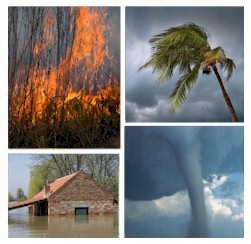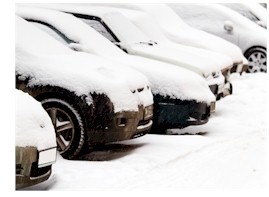|
|


Emergency Alert Systems
 This section of our technical library presents articles written about Emergency Alert Systems and Disaster Recovery definitions, terms and related information.
This section of our technical library presents articles written about Emergency Alert Systems and Disaster Recovery definitions, terms and related information.
The 911Broadcast emergency notification and alert service can deliver a large number of phone calls using a network of phone systems employing digital phone lines simultaneously. Should a disaster such as a snow storm, wild fire or flood hit your area, 911Broadcast systems can alert your community quickly providing specific instructions if an evacuation is required.
This service is available using our emergency broadcasting systems. If a dangerous chemical spill occurs in your community, you can target specific areas to call. If a severe snow storm hits your area, your community can be notified of school closings or event cancellations.
What is a blizzard?
Reprint: nsidc.org
1. What is a blizzard?
Blizzards are severe winterstorms that pack a combination of blowing snow and wind resulting in very low visibilities. While heavy snowfalls and severe cold often accompany blizzards, they are not required. Sometimes strong winds pick up snow that has already fallen, creating a blizzard. Officially, the National Weather Service defines a blizzard as large amounts of falling OR blowing snow with winds in excess of 35 mph and visiblities of less than 1/4 of a mile for an extended period of time (greater than 3 hours). When these conditions are expected, the National Weather Service may issue a "Blizzard Warning". When a less severe, but still dangerous, winterstorm is expected a "Winterstorm Watch" or "Winterstorm Warning" may be issued.
A "Winterstorm Watch" is issued in advance and means that there is the possibility of a winterstorm affecting your area. Keep alert and stay tuned to TV, radio, and other sources of weather information. A "Winterstorm Warning" means a winterstorm is imminent or already occurring. Plan and prepare now for severe winter weather.
2. What makes blizzards dangerous?
Blizzards can create a variety of dangerous conditions. Traveling by automobile can become difficult or even impossible due to "whiteout" conditions and drifting snow. If you must drive in a blizzard, be prepared! Make sure your automobile is properly equipped and that you have emergency supplies in case you become stranded or lost. The Federal Emergency Management Agency (FEMA) has compiled a fact sheet on winter driving to help people prepare.
The strong winds and cold temperatures accompanying blizzards can combine to create another danger. The wind chill factor is the amount of cooling one "feels" due to the combination of wind and temperature. For instance, a strong wind combined with a temperature of just below freezing can have the same effect as a still air temperature about 35 degrees colder. A wind chill chart may be used to estimate the wind chill factor.
Exposure to low wind chill values can result in frostbite or hypothermia. Frostbite is a severe reaction to cold exposure that can permanently damage its victims. A loss of feeling and a white or pale appearance in fingers, toes, or nose and ear lobes are symptoms of frosbite. Hypothermia is a condition brought on when the body temperature drops dangerously low. Symptoms or hypothermia include uncontrollable shivering, slow speech, memory lapses, frequent stumbling, drowsiness, and exhaustion. Both hypothermia and frostbite require immediate medical assistance! However, low wind chill values shouldn't keep you from going outside, but encourage you be informed and dress properly.
Blizzards also can cause a variety of other problems. Power outages can occur due to strong winds and heavy snow. Pipes can freeze and regular fuel sources may be cut off.
For more information, see FEMA's Winter Storm Update Center.
3. How much snow fell during the January 6-8, 1996 Blizzard?
Aside from the strong winds, blowing snow and reduced visibilites that normally accompany blizzards, the most spectacular aspect of the January 6-8, 1996 Blizzard was the very heavy snowfalls over the mid-Atlantic region. In both Philadelphia (30.7") and Newark, NJ (27.8") the greatest storm totals ever were observed. Other impressive amounts include:
state/district city/location amount (inches)
- D.C. National Airport 17.1
- MD Baltimore 23.0
- MA Boston 17.0
- MD Frostburg 32.0
- NY New York City: Central Park 20.2
- PA Shippensburg 35.0
- PA York County 35-40
- VA Dulles Airport 24.6
- VA Front Royal 32.0
- VA Shenandoah 37.0
- WV Pocahontas County 40-48
4. Why the excessive snowfalls?
One reason the snows were so heavy, besides the fact that there was a strong low pressure system, is because a large, cold air mass was firmly entrenched over the Northeastern U.S. Signatures of this cold air mass can be seen on the surface map from Sunday, January 7th. Note the arctic high pressure system centered just north of New York state. In addition, temperatures in New England were very cold--below zero in some areas. This large, cold air mass was an important factor in creating the very heavy snows, but not just because the air mass was cold. Cold air is denser and heavier than warm air, so it doesn't move quickly or easily. It is often useful to visualize an arctic air mass as molasses. For this reason, the low pressure system moving up the East Coast was retarded as it tried to push into the colder, heavier air mass already in place.
Therefore the storm slowed down and the snow was prolonged in many areas, resulting in the very heavy snowfalls. The northerly winds on Sunday's surface map over the Northeastern U.S. are excellent indicators of opposing arctic air mass.
Blizzards - Emergency Dialers For Snow Storm Warnings
 If a blizzard or severe snow storm is threatening your community, our emergency phone service can help you notify your emergency response staff and neighbors.
With our emergency phone service, you can broadcast warning messages to thousands of households in your community warning of catastrophic disasters including blizzards and severe winter storms.
If a blizzard or severe snow storm is threatening your community, our emergency phone service can help you notify your emergency response staff and neighbors.
With our emergency phone service, you can broadcast warning messages to thousands of households in your community warning of catastrophic disasters including blizzards and severe winter storms.
Messages can be simultaneously delivered in just minutes using our network of phone systems and services. Pre-recorded warning messages can be played giving households information regarding the blizzard location and whether a community should take special actions. You can send a broadcast warning to specific neighborhoods or communities in the event of a blizzard and provide priority delivery of these messages to those in remote areas where utility or public services may be suspended.
Multiple messages can be delivered to different members of the community based upon proximity to the storm and areas most effected by the blizzard. Calls can be directed to operators that are standing by to handle special individual emergencies.
Messages can also be broadcast to emergency responders such as EMS crews or other volunteers or special assistance from emergency personnel.
|




 This section of our technical library presents articles written about Emergency Alert Systems and Disaster Recovery definitions, terms and related information.
This section of our technical library presents articles written about Emergency Alert Systems and Disaster Recovery definitions, terms and related information.
 If a blizzard or severe snow storm is threatening your community, our emergency phone service can help you notify your emergency response staff and neighbors.
With our emergency phone service, you can broadcast warning messages to thousands of households in your community warning of catastrophic disasters including blizzards and severe winter storms.
If a blizzard or severe snow storm is threatening your community, our emergency phone service can help you notify your emergency response staff and neighbors.
With our emergency phone service, you can broadcast warning messages to thousands of households in your community warning of catastrophic disasters including blizzards and severe winter storms.